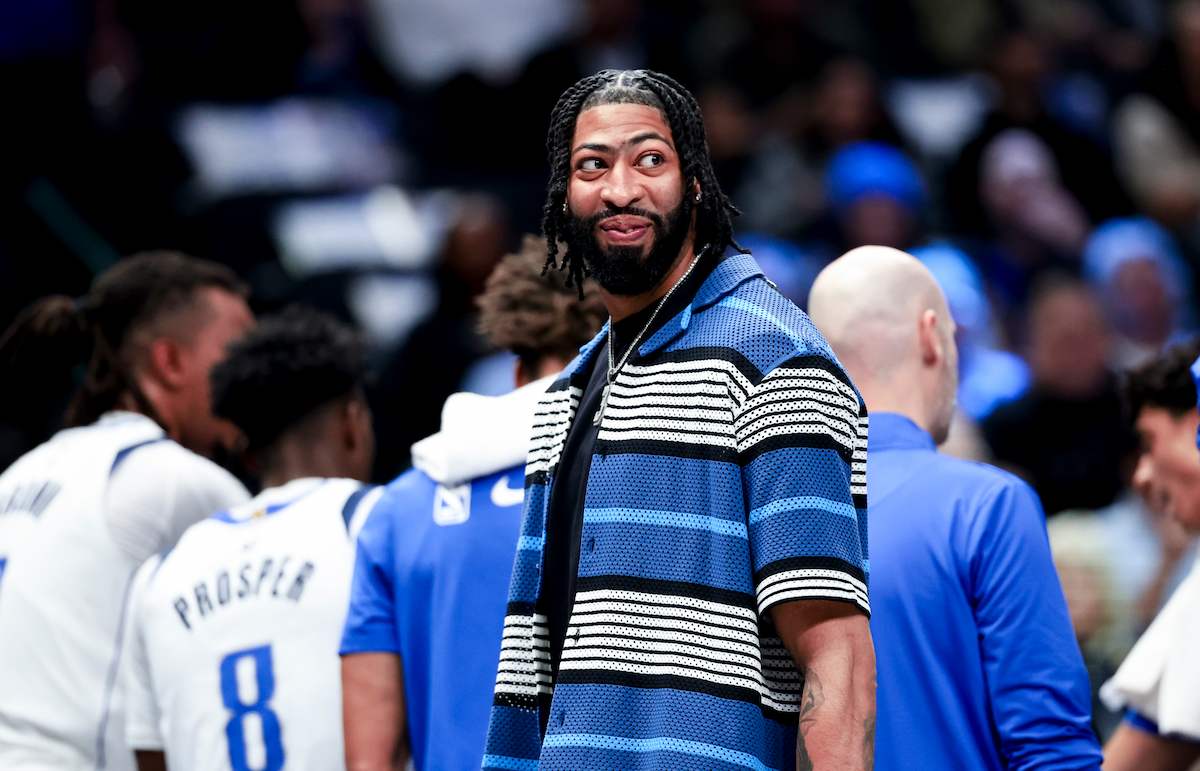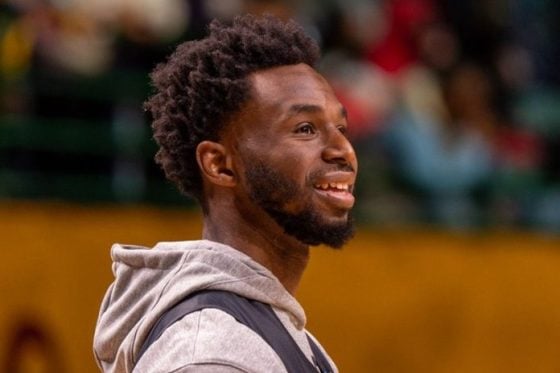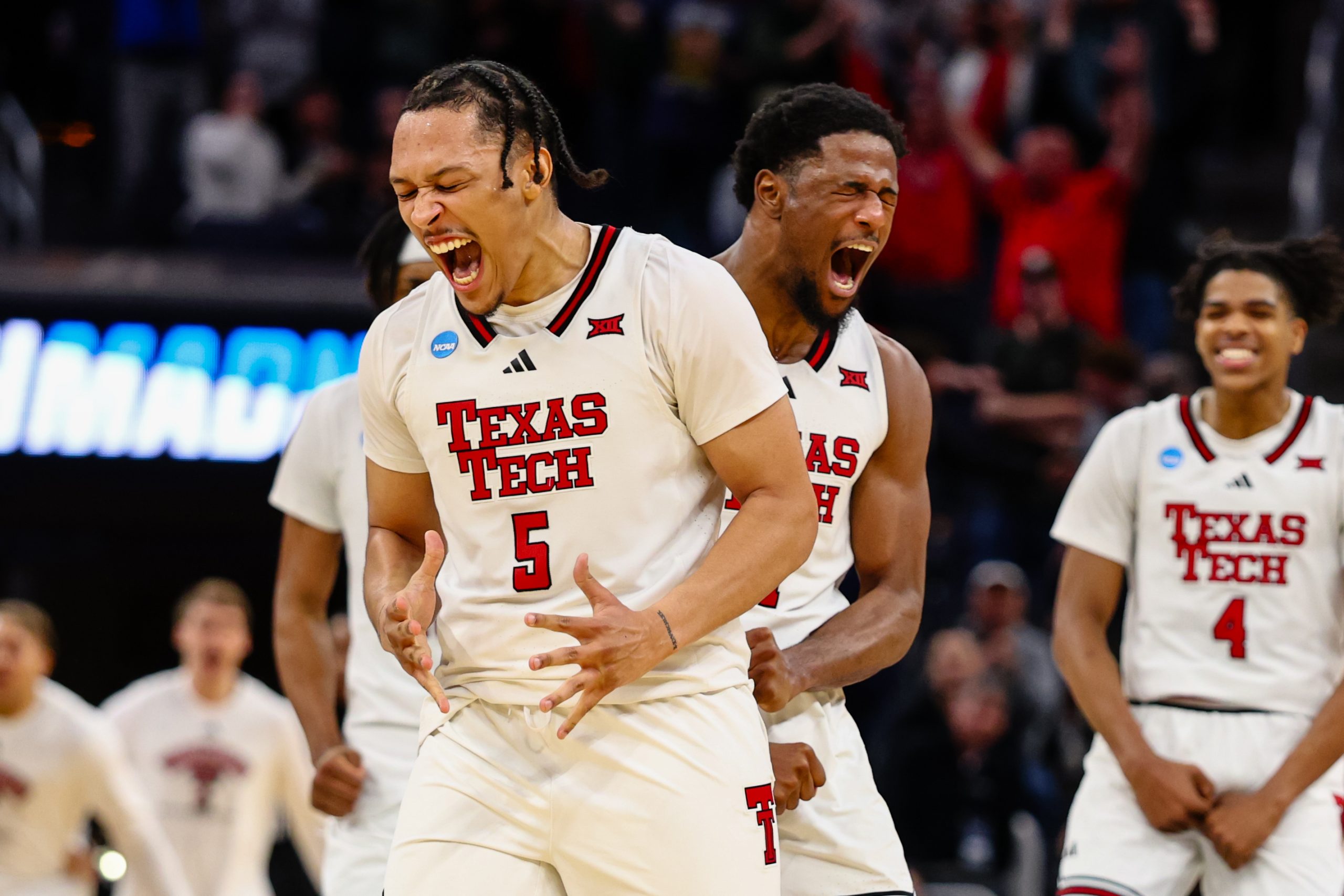Ford died at age 74 Tuesday of heart failure, the latest in a long line of Celtic champions to perish recently.
Known as a very smart and fundamentally sound player, Ford was the starting off guard for Boston when they won the 1981 NBA title, also against the Rockets. He later served as a Celtic assistant coach for seven seasons and was a key staff member under K.C. Jones on the 1984 and 1986 championship teams.
He took over the reins from Jimmy Rodgers in 1990 and served as Boston head coach in Bird’s final two seasons, posting a fine 107-57 record with one division title.
He later coached the Bucks, the rival 76ers and the Clippers.
Ford’s first season with Boston of 1978-79 was his best statistically. He averaged a career-high 15.6 points and 4.7 assists per game, and shot a solid 47.4 percent from the field. He netted his career-high of 34 points that season in a 103-102 win over Golden State, which had a starting center in that game named Robert Parish (Chief scored 22 and grabbed 10 rebounds). Chris hit 17 of 24 shots from the field in that January 28, 1979 contest.
Of course, that 1979 Celtic team was bad, winning just 29 games in the last pre-Bird season. In an interesting stat, the Celtics would win as many games (a league-best 61) in Bird’s rookie season as they did COMBINED in the previous two seasons of just 32 and 29 victories.
Photo by Frank O’Brien/The Boston Globe via Getty Images
The shot heard round the NBA world happened in Larry Bird’s much-anticipated rookie debut on October 12, 1979 in the venerable Boston Garden. But it was the much less-heralded Chris Ford, not Larry Legend, who drained the first triple in league history from slightly to the right and beyond the top of the key against the Houston Rockets.
He launched it over a hesitantly defending 6-8 Robert Reid, who seemed to not quite believe Ford would take such a long shot in those more conservative times. As Bird jockeyed for rebounding position under the hoop, the bomb dropped cleanly through the net.
At the time, no one suspected that the seldom-used long shot would crazily take over the sport a few decades later. One might sub-title the triple-saturated game now “How I Learned to Stop Worrying and Love the Three-Point Bomb,” with apologies to director Stanley Kubrick and his film, Dr. Strangelove. But in that mid-October game which featured outstanding long-range marksmen like Bird, Rick Barry and Calvin Murphy, the relatively obscure but solid Ford was the first one to hit a three-pointer.
Chris scored 17 points in that famous 114-106 Celtic victory. Boston made one of a mere three triple tries in that contest, while Houston shot 1-10 beyond the arc (one-time ABA superstar Barry made the lone Rocket trifecta).
Incidentally, Red Auerbach was also one of the few NBA chieftains at the time to vote against adopting the three-point shot, calling it a gimmick. Bird also said he did not like the rule, but learned to use it well for psychological damage.
The league had instituted the three-point shot rule first used in the new American Basketball league of the early 1960s at the behest of recently-retired Celtic great sharpshooter Bill Sharman, who was then the coach of the Los Angeles Jets in the fledgling league. Sharman’s reasoning for the triple shot was to bring the little man back into a game that had been dominated by the recent influx of big, great centers.
After the first rise of huge dominating centers like George Mikan and Bob Kurland in the mid-1940’s, the NCAA even toyed with bringing the three-pointer into effect back then, but resisted instituting the rule until the mid-1980s. Old-time films show players routinely shooting set shots from 30 to 40 feet in college games, and actually making them at a reasonable clip considering the shot length and relatively primitive playing and ball conditions.
The flashy ABA resuscitated the three-pointer and capitalized on the “home run” shot from 1967-76. Seeing the red, white and blue ball rotate through the air and into the net had a mesmerizing effect, much like NFL Films with its slow motion video of spirals passed over long distances. Even uber fundamentally-sound Celtic great John Havlicek advocated for adoption of the three-point shot at the banquet during his last All-Star Game in 1978. He felt that the three-pointer would open up the lane for easier driving and make the game less physical, putting more emphasis on skill. He proved to be prophetic. The NBA finally adopted the rule for the 1979-80 season and now over 40 years later, the shot has taken over the game.
When Ford found out the NBA had adopted the three-point rule in 1979, he wisely spent the summer before that season working on the long distance shot, which was considered bad percentage basketball at the time. He turned it into a weapon and extended his starting career by being one of the first good long-range sharpshooters from beyond the arc.
:no_upscale()/cdn.vox-cdn.com/uploads/chorus_asset/file/24370777/988030294.jpg)
Photo by Focus on Sport/Getty Images
Ford’s three-point shooting style was almost like a reformed old-style set or push shot, with his right foot slightly ahead of the left as he launched it. Before one makes fun of his slightly unorthodox style, one should realize that most modern triple shooters also shoot flat-footed treys. Even Steph Curry really shoots a modified set shot on his threes, jumping more AFTER the release. On a true jump shot, players elevate and then release the ball just before or at the apex of their leap.
Showing how different the game is now, Ford canned 70 of 164 threes he launched in the 1979-80 season for a very good 42.7 accuracy clip. He was third in the league in three-pointers made, and ranked second in triple percentage. “Downtown” Freddy Brown of Seattle led the NBA at 44.3 percent, while Bird made 58 of 143 triple tries (40.6 percent). Today, Steph Curry attempts 164 threes in a single month!
Although he was viewed as the stereotype heady, fundamental guard, Ford had more than a little flash to his game. If you check out his CBS Sunday game with Detroit against Pete Maravich and the New Orleans Jazz on YouTube circa 1978, you will see him throwing behind the back passes and making some other slick moves while doing a solid job defensively against the Pistol.
He was also referred to among Celtic teammates by the ironic nickname of “Doc.” In a fairly unknown story, Ford slammed in a surprising dunk over Julius Erving and the rival 76ers. Ford stuffing the ball over such a legendary dunker and a taller, good shot-blocker like Erving took people by surprise. But at almost 6-5 and with long arms, Ford was pretty athletic in his younger years. Among the Celtics as a nod to that slam and as a subtle needle to the much more hyped Erving who was called Doc.
Ford was a starting guard on the Villanova squad that lost the 1971 NCAA title game in the Astrodome to UCLA, the first Final Four staged in a domed stadium. He passed out 10 assists in a close but losing 68-62 cause. Ironically, in the closing minutes of Villanova’s Elite Eight loss to St. Bonaventure in the 1970 NCAA tournament, Ford fell backward during a loose ball scrum into the knee of future Pistons teammate Bob Lanier, knocking Buffalo Bob out of the ensuing Final Four. Without the injured Lanier the Bonnies lost to Jacksonville and Artis Gilmore a week later, depriving fans of a chance to see the two southpaw centers square off in the national semifinals. Ford played with Lanier from 1972-78 in Detroit, averaging 8.5 points and 3.5 assists a game over 485 contests. The Celtics smartly acquired him for a draft pick and Earl Tatum a few games into the dismal 1978-79 campaign.
In another oddity, the New Jersey native is one of three men (Doc Rivers, Jim O’Brien) who were head coaches for both the Celtics and arch-rival 76ers. Of course, he had much more success with Boston, posting a 222-188 record over five seasons from 1990-95. His teams won a division title and went 13-16 in four playoff seasons. But an aging, injured team could not get past the Eastern semifinals in 1991 and 1992, losing tough series to Detroit and Cleveland both times in Bird’s final seasons.
The death of Reggie Lewis after he collapsed in the 1993 playoffs vs. Charlotte, and the retirements of Bird (‘92) and Kevin McHale (‘93) and departure of Robert Parish (’94) spelled the end of his Celtic success on the bench.
In two full seasons as head coach for Milwaukee from 1996-98, his teams went 69-95. He later coached parts of three seasons for the Clippers and 76ers before hanging up his clipboard.
Ford started 75 games for Boston in the championship season of 1980-81, playing in all 82 regular season games. In Game 6 of the 1981 Finals at Houston, the Rockets were rallying late before Bird stymied their momentum by nailing three big shots, including a corner triple.
But Ford also made a diving steal and drew a key foul late in that game to help seal the 14th Boston banner. The Celtics outscored Houston 16-8 down the final stretch to win, 102-91. Chris scored 10.5 ppg in that championship series. In the Game 3 94-71 Celtic win, he tallied a series-best 17 points on 7-of-12 shooting – including two of three from three-point land.
In the 1981 ECF Celtic game six thriller at Philadelphia which tied the series 3-3, Ford came up with two big hustling saves on the same long offensive possession to help Boston beat the 76ers, 100-98. It was that sort of “doesn’t show up in the box score” type of in the right place opportunism that made Ford even more valuable than his stats.
:no_upscale()/cdn.vox-cdn.com/uploads/chorus_asset/file/24370793/492284381.jpg)
Photo by Dick Raphael/NBAE via Getty Images
At the 1981 championship parade in Boston, the wry Ford can be seen laughing to Larry’s right as Bird leans into a microphone and tells the assembled crowd the “only place I’d rather be is back in French Lick.”
Ford’s scoring dipped from 11.2 ppg in 1979-80 to 8.9 during that title year, but he was still an important cog in the team. Yet he was overlooked as the fifth wheel starter on a team of big stars. Even key reserves like the young McHale and the excitable M.L. Carr received more attention than Ford did on those 1980-82 teams. Those early Bird squads had almost a collegiate feel to them, with a lot of rah-rah from the bench, which was unusual and deemed “uncool” in the NBA of that time. Today, bench players often jump to their feet and wave towels in celebrating good or flashy plays made by their teammates. Back then, it was a rarity. Ford noted that the players on those Celtic teams had a real esprit de corps, that they rooted openly for one another “with a college-type attitude.”
Defenses were wary of and better prepared for Ford’s three-point shooting in the second year of the trifecta, and his triple accuracy dropped almost 10 percent to 33.0 in 1981-82. Still, that number was good enough to rank him seventh in the NBA.
He started 53 games for the defending champion 1981-82 Celtics, who posted a league-best 63-19 record. It was the third straight season with Bird that Boston led the league in victories. Ford scored just 5.7 ppg in 20.9 minutes a game, but was still a valuable member of the league’s best regular season team. A shoulder separation by playmaker Nate Archibald in the 1982 Eastern finals vs. the 76ers cost Boston a chance to repeat, as they lost in seven games to the rival Sixers.
Ford retired the next fall after the Celtics cut him in late October just before the 1982-83 season was set to tip-off. A young Danny Ainge and the recently-acquired Quinn Buckner made backcourt minutes and spots scarce.
A year later, Chris joined the Boston coaching staff for the 1983-84 season, helping the Celtics win their 15th title over the Lakers in seven memorable games.
When Boston beat his former Detroit franchise in the rancorous 1987 Eastern Conference finals, the feisty Ford had some words for Isiah Thomas after the Pistons star’s sour grapes, post-Game 7 loss comments. After ridiculously agreeing with Dennis Rodman that reigning three-time MVP and two-time Finals MVP Bird was “overrated” due to his skin color, Thomas was asked what chance a battered Boston team had to beat the rested and waiting, healthy Lakers.
A crabby, biased Thomas answered that the Celtics had “no chance” to beat the favored Lakers, who featured his then-best buddy, Earvin Johnson. To which the fiery Ford retorted, “well, at least we will get that chance.” That attitude illustrates the spunky chip Ford played with. As a slightly unlikely looking NBA guard for a decade, he carved out a solid career with a versatile skill set, underrated athleticism and a high hoops IQ.
In 10 seasons from 1972-82, Ford averaged 9.2 points, three rebounds, 1.6 steals and 3.4 assists in 27.8 minutes per game while playing fine defense. He ranked fifth, eighth and ninth in the league in steals from 1976-78. He shot a more than respectable 37.5 percent from three-point territory over the first three seasons of the rule was in effect in the NBA (1979-82), canning 126 treys. At that time when the shot was less practiced and relatively de-emphasized, 37.5 was a high percentage for accuracy from deep.
In an increasingly entertainment-oriented business/league where the powers-that-be are always seeking to make the game more marketable by artificially promoting offense, it is much easier to shoot three-pointers today.
I am the only one I know who says this, but the ball this century (not sure exactly when the change was quietly made) is smaller now at 29.5 inches, compared to the 30 inches it used to be in Ford’s era and before. That half inch is a big difference when shooting a round, bouncy object into a slightly bigger hard ring suspended 10 feet off the floor. Not to mention the league in Ford’s time used a slicker ball that was harder to shoot than the tacky one now that hangs on the rim better and has seams embedded more deeply to promote better grip and backspin – and that softer, breakaway rims were not yet in vogue.
Players also did not grow up practicing 25-footers like they have from junior high on up over the last 30 years. Old-school former college coaches like Bill Fitch, his mentor on the Celtics from 1979-82, were representative of the typical coaches then who were much more controlling and did not allow players to shoot threes at will as the more lenient coaches have to today.
Yet Ford made a late-career renaissance with the Celtics in part due to his timely three-point sniping. Ironically, the super-hyped Curry’s career triple accuracy pct. is 42.7, the EXACT same percentage as Ford shot that first season in 1979-80 without a lifetime of practicing the long shot.
Ford was a very underrated, solid player. He could do everything pretty well, and was versatile and a good enough ballhandler at his size to be a point guard when needed, especially during his Piston years. In his last three seasons with the Celtics he started at guard for the team which posted the best records in the NBA each year at 61-21, 62-20, and 63-19. His intangible contributions of high basketball IQ, feisty defense and competitiveness make his somewhat modest statistical numbers even better.
Legendary Celtic patriarch and nine-time NBA head coaching champion Red Auerbach thought enough of Chris to make him the team’s head coach at the end of the incredible Bird era. Combining his 10-season career as a player with his 10 seasons as a head coach and seven more as an assistant, Ford fashioned a very solid, unsung NBA career. He won one ring as a player, came very close to winning it all two other times in 1980 and 1982, and contributed to two more Boston banners as a valuable assistant coach.
You can contact article author Cort Reynolds at cdrada2433@yahoo.com.






